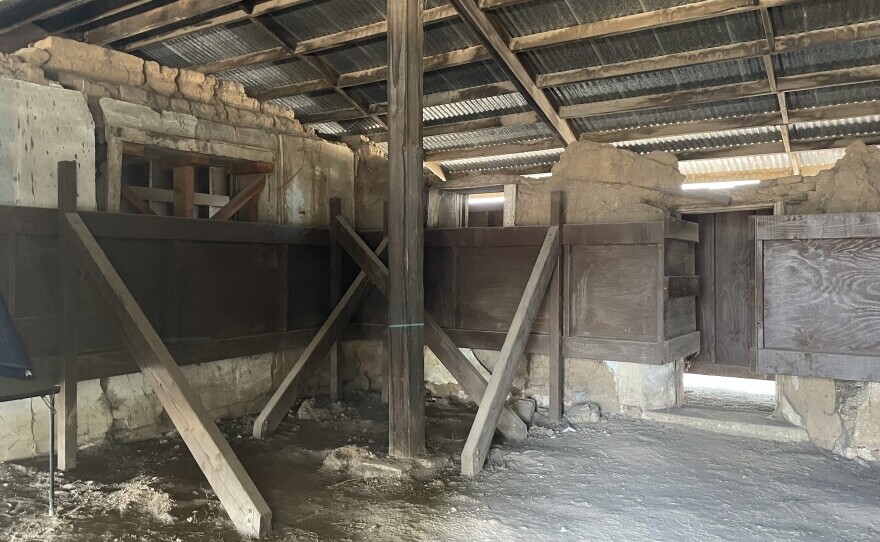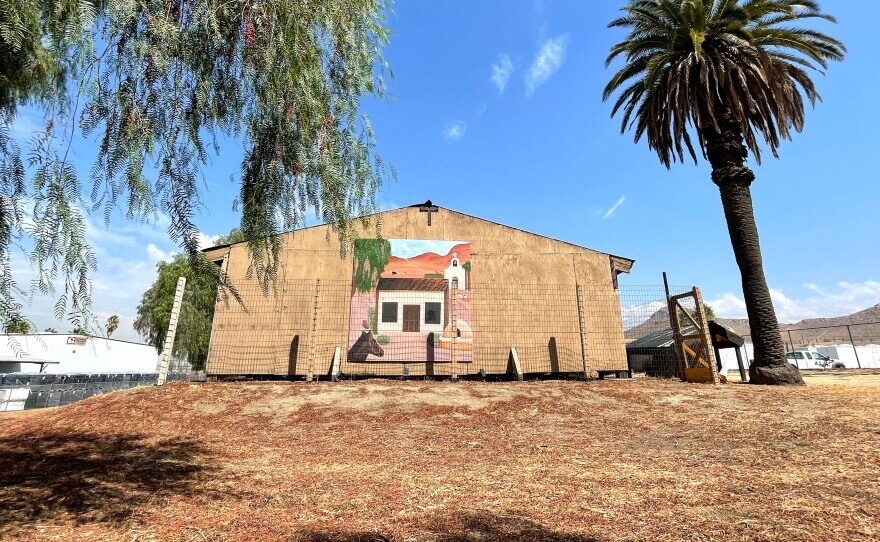On an industrial stretch of Orange Street in Riverside's Northside, delivery trucks rumble past a small wooden building. Inside is a California Point of Historic Interest, the Trujillo Adobe built over 150 years ago in 1862.
But for Nancy Melendez, she first knew it as grandma's house.
Melendez, is a descendent of the man that built the adobe, Lorenzo Trujillo. Melendez and her cousins are behind a grassroots effort started around a decade ago to save the adobe and revive plans to build a local historic park. They also created the Spanish Town Heritage Foundation to raise awareness of this part of California’s history.
“I like to call it Riverside’s pre-history," said Melendez. "There was this community here. And these people, our people are still here.”
As we enter the wooden structure that protects it, she shares the home stayed in her family until 1957 when her great-grandmother decided it was time to live somewhere with indoor plumbing.
“I would come and spend the night with grandma, and it was a beautiful place. It seemed so huge to me," said Melendez. "And I would sit in that window and read my books.”
She’s pointing to what’s left of her great-grandmother’s home which is only three adobe walls, held up by supports.

The county bought the property in 1977 with the intention of creating a local historic park. But then there were budget cuts and bad weather. The roof collapsed followed by the fourth mud-brick wall. “It was the Murphy’s Law. Anything that could go wrong it did” said Melendez.
The story of the adobe starts in the 1800s when Trujillo was born in New Mexico a Genizaro— a Native American raised in a Spanish household most likely not by choice.
As an adult, he led 10 local families over 1200 to accept a promise of owning the land Melendez is standing on now. Trujillo built the adobe before Riverside was a city and when the land was still a part of Mexico.
Quickly the area around the adobe became the largest non-native Hispanic settlement between Santa Fe, New Mexico and Los Angeles along an old Spanish trade route. Today, the adobe is all that remains.
“So we said, well how can we get this story out because no one knows,” said Melendez.
Her family's work comes during a period when minority communities nationally are being told their stories are important said Dennis Arguelles of the National Parks Conservation Association.
He said even at the national parks' level, there is still a big gap in recognizing how these communities have shaped America. His organization is working to expand the parks system to recognize the farmworker movement in the southwest led by Cesar Chavez and Filipino farmworkers, and immigrant neighborhoods in Los Angeles important to Cambodians, and Armenians.
“Maybe I’m being naive, but hopefully if we tell more of these stories, people understand the fabric of our country is much more diverse," said Arguelles. "(And) that some of these communities have been here for centuries and have contributed to the country.”
The adobe can be a step toward achieving something similar in Riverside said Riverside County’s Historic Preservation officer Tony Pierucci. It recognizes early settler history but also "it can tell the story of that Northside neighborhood that was largely Hispanic throughout the 20th century and we don’t have historic resources to tell that narrative,” said Pierucci.
The biggest challenge has been finding the millions of dollars it will take to preserve the adobe and build a park.
During Pierucci’s three years in the role, he’s worked closely with Nancy Melendez and the Spanish Town Heritage Foundation as they seek out private donations and make the case for state and federal funding.
The adobe is now written into the county’s development plans, and this year it was named one of America’s 11 most endangered historic places. “This is very much the adobe’s time to shine,” said Pierucci.
For Melendez and her cousins, they will continue the work of sharing the story to anyone willing to listen—including local third graders.
They do school presentations on the adobe where they share the names of the settlement’s first families like the Pena’s, Trujillo’s, Baca’s, and Espinosa’s. “And little eyes light up, and little hands shoot up and say that’s my name or that’s my cousin’s name or that’s my aunt’s name," said Melendez.
The local park would ensure generations can engage with this history and learn their place in it. Because knowing our history, or where we come from said Melendez is the only way to know where we are headed.
"It is empowering because we’ve been made to feel we don’t belong and we do," said Melendez. "We need knock down barriers that prevent us from communicating with one another and understanding one another."





